Mastering the Axis Wake Dynamics in Kiteboarding

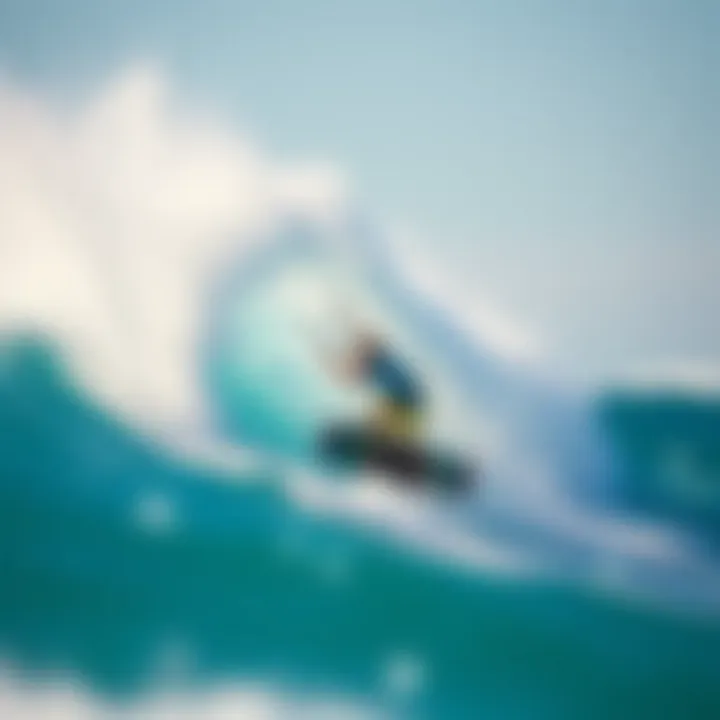
Intro
Kiteboarding is an art that melds thrill, technique, and the elements. Central to this adrenaline-pumping activity is the concept of the axis wake. This phenomenon isn’t just a trivial aspect of kiteboarding; rather, it plays a pivotal role in determining how smoothly a kiteboarder rides and maneuvers through water. Understanding the axis wake can mean the difference between a basic ride and a dazzling performance that turns heads.
In this article, we will navigate through the intricate dynamics of the axis wake. We’ll break down the physics involved in wake formation, discuss how environmental factors can alter its effects, and give you practical tips to master the wake—no matter if you are just starting out or have been riding for years. You'll be armed with knowledge that enhances your performance while also deepening your appreciation for the sport.
Gear and Equipment
The first step towards harnessing the power of the axis wake starts with having the right gear. Choosing the right equipment is crucial for anyone hoping to ride efficiently and effectively. Let’s explore what you need.
Essential Kiteboarding Gear for Beginners
If you’re new to kiteboarding, the right gear isn’t just a luxury; it’s a necessity. Here’s what you’ll need to get started:
- Kite: Opt for a stable, easy-to-control kite. Brands like Ozone and Naish offer excellent options for novices.
- Board: A larger board helps with stability and balance. A good beginner board is the Liquid Force Splash.
- Harness: A comfortable harness distributes the load, so choose one that fits snugly without being restrictive.
- Safety Gear: Always wear a helmet and impact vest. Safety should never take a backseat.
Advanced Equipment for Experienced Riders
Once you’ve gained some experience, you may want to refine your gear for better performance. Here are a few advanced options:
- Performance Kite: Consider switching to a kite designed for higher speeds and maneuverability, like the Slingshot Rally.
- Smaller, Lighter Board: Experienced riders typically opt for smaller boards that allow for quick turns and jumps, such as the Cabrinha Chaos.
- Splitboard: This innovative gear is great for travel, allowing riders to break down their board into smaller pieces while maintaining performance on the water.
Each piece of kiteboarding equipment brings its own quirks and characteristics. Understanding these allows riders to enhance their connection with their board and kite beyond just the basics.
Techniques and Tips
Now that you're well-equipped, it’s time to talk about techniques and ways to make the axis wake work in your favor.
Basic Riding Techniques for Newbies
As a beginner, your focus should be on mastering basic controls and how to ride efficiently. Keep these points in mind:
- Body Position: Maintain a straight back and bent knees for better balance.
- Kite Control: Practice flying the kite at different angles to understand how it affects your speed and direction.
- Finding the Wake: Position yourself directly behind the kite's wake; this is where you’ll catch the most lift.
Expert Tricks to Elevate Your Skills
As you get more comfortable, you might want to try some advanced techniques that leverage the axis wake:
- Jumping: Use the wake to launch into the air. Timing your edge with kite power is key.
- Transitions: Master changing direction while keeping momentum—this smooths your overall ride.
- Wakestyle Tricks: Attempt tricks involving wake manipulation, like handle passes.
"With practice and dedication, you can turn the axis wake from a simple phenomenon into a powerful tool for performance improvement."
Ending
Understanding the axis wake opens a new playing field for kiteboarders of all levels. From selecting the right equipment to mastering advanced techniques, each aspect plays a vital role in improving your kiteboarding experience. Keep exploring, keep practicing, and before you know it, you’ll be riding the waves like a pro.
Understanding Axis Wake Dynamics
When it comes to kiteboarding, the axis wake is more than just a passing phenomenon; it's a fundamental aspect that can make or break a ride. Understanding axis wake dynamics means delving into how kiteboarders can harness the potential of this wake to enhance their overall performance. This concept isn’t just an academic exercise; it bears real-world implications for speed, control, and the ability to execute tricks proficiently.
The axis wake plays a crucial role in the interaction between the kite, water, and the rider. By grasping the dynamics involved, kiteboarders are better equipped to optimize their techniques and improve their rides. From a practical standpoint, knowing how to manipulate the wake can lead to substantial gains in maneuverability. Riders who understand axis wake can exploit it to gain extra speed or to transition seamlessly from one trick to another.
Benefits of Understanding Axis Wake Dynamics
There are several key benefits to having a deep understanding of axis wake dynamics:
- Enhanced Performance: By mastering the axis wake, riders can improve their speed and agility on the water. This can be particularly advantageous in competitive environments.
- Trick Execution: Kiteboarders can leverage wake dynamics to initiate and land tricks more effectively. Knowing how the wake responds to kite positioning and rider movement can make the difference between a successful maneuver and a wipeout.
- Safety and Control: A solid grasp of wake dynamics can enhance a rider's control over their kite and board, leading to safer and more enjoyable rides.
Understanding these dynamics isn’t just about technical knowledge; it’s about developing a feel for the water and the wind. In the next sections, we’ll explore what exactly the axis wake is and investigate the science behind how it forms.
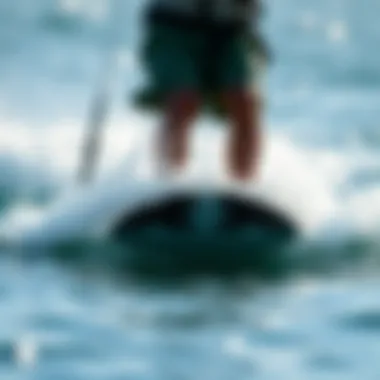
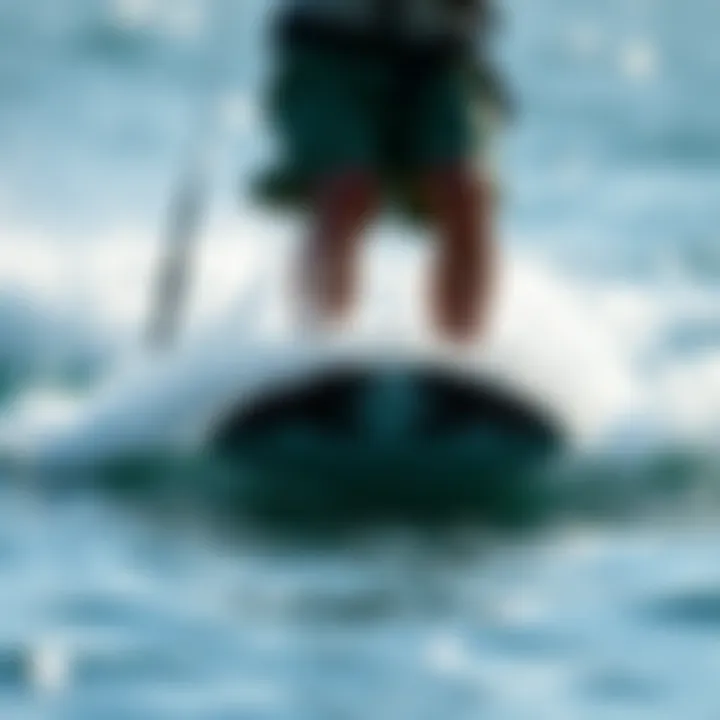
Defining Axis Wake
To really get a handle on the axis wake, we should start by defining what it is. The axis wake refers to the wake generated directly behind the kite and the rider as they move through the water. Unlike traditional wakes formed by boats, the axis wake enhances the rider’s trajectory due to the unique physics at play.
This wake can be influenced by several factors, including the angle of the kite and the speed at which the rider travels. As the kite cuts through the air, it creates a pressure difference that leads to the formation of a wake. The unique shape and dynamics of this wake can lead to an exhilarating riding experience when harnessed correctly.
Unlike other wakes, the axis wake is closely related to the positioning of the kite and the rider’s body mechanics. This interplay of elements requires the rider to adapt and adjust based on both environmental conditions and their riding style.
Physics of Wake Formation
The physics behind wake formation is where the magic really begins. When a kiteboarder navigates across the water, the kite generates lift and drag. As the kite moves, it displaces water, which leads to the formation of the wake. The angle at which the kite is held relative to the wind significantly impacts the shape and intensity of this wake.
In simplified terms, when the kite is positioned optimally, it creates a streamlined flow of air and water, allowing the wake to develop its size and shape. This means that factors such as proximity to the water surface and kite tension play vital roles in wake characteristics.
- Lift and Drag: The lift generated by the kite pulls the rider upwards, while drag affects how smoothly they glide across the water. The balance between these two forces is essential for effective wake formation.
- Surface Tension: The interaction with the water surface also affects wake dynamics. If the surface is choppy, it can disrupt the flow, leading to inconsistencies in the wake.
Understanding these underlying principles equips kiteboarders to manipulate their rides more effectively. It empowers riders to tweak their techniques based on the water conditions and tailor their performance to capitalize on the axis wake.
"The best kiteboarders aren’t just skilled; they understand the environment and make it work for them."
The Role of Axis Wake in Kiteboarding Performance
Understanding the role of axis wake is pivotal for kiteboarders aiming to elevate their performance on the water. This aspect of kiteboarding influences not just the flow of the ride, but also how riders maneuver and execute tricks. With the right grasp of these dynamics, kiteboarders can enhance their skills and achieve new heights in their riding experience. The axis wake provides unique benefits that cater to various riding styles, making it a central element in kiteboarding performance.
Kiteboarding isn't merely about zipping across the water; it thrives on the nuances of how a kite interacts with the water's surface. When a kite is in motion, it creates a wake that is more than just a ripple; it's a powerful dynamic that can dictate speed, agility, and even the execution of advanced maneuvers. Understanding how to ride this wake can be the difference between a standard day on the water and an exhilarating, high-performance session.
Impact on Speed and Maneuverability
The axis wake significantly affects a rider's speed and their ability to maneuver. A well-timed harness of the axis wake translates into a smoother and faster ride. Understanding the wake's formation will allow riders to use the energy it provides to achieve higher speeds.
Many riders notice that when they position their kite effectively, the axis wake can serve as a ramp, pushing them forward without requiring excessive effort. Here’s how it works:
- Kite Position: The position of the kite plays a crucial role. A lower kite angle can boost downwind speed, while a higher angle can initiate sharper turns.
- Body Positioning: When a rider leans back into the harness, they can capitalize on the push of the axis wake, effectively transferring that energy into speed.
- Wave Interaction: For those riding in the surf, the intersections of the wake with waves create opportunities for both speed and tricks, as the water's natural ebb can amplify the effects of the wake.
Ultimately, being consciously aware of the axis wake's characteristics allows riders to adjust their techniques and position accordingly. The understanding and mastery of this can greatly enhance maneuverability. Riders who can adeptly shift their weight and direction are more equipped to tackle sharp corners and unpredictable elements in the water.
Enhancing Tricks with Wake Dynamics
Tricks in kiteboarding are exciting, but they demand precision and timing. The axis wake can be an invaluable ally in executing these tricks. The descending force of the wake, when correctly utilized, can lead to jaw-dropping airtime and seamless transitions.
For instance, during a jump, if a rider angles their kite into the wake at the right moment, they can catch the upward force, resulting in higher lifts. Here’s how to enhance trick execution using wave dynamics:
- Timing: Riders need to gauge the moment to transition from riding to jumping. Timing in relation to the axis wake's energy is essential.
- Kite Control: Riders should master how to control their kite through the various phases of a trick. The position of the kite will determine how much lift is gained from the wake.
- Utilizing the Wake: By leaning into the wake as they prepare for tricks, riders can create more lift off the water, making their moves look smooth and effortless.
Achieving mastery over the axis wake is not just about riding skills; it's a true dance between nature, equipment, and rider’s intent.
Techniques for Mastering Axis Wake
Mastering the axis wake is crucial for kiteboarders aiming to optimize their performance and create an enjoyable riding experience. Understanding the nuances of axis wake dynamics not only helps in refining riding techniques but also guides kiteboarders in adjusting to varying conditions. The techniques discussed here will empower riders to harness the full potential of the axis wake, allowing for better speed, control, and creativity on the water.
Optimal Kite Positioning
Kite positioning plays a pivotal role in how effectively a rider can harness the axis wake. When positioning the kite, it’s essential to find that sweet spot in the wind window where it generates maximum lift and forward momentum. Riders should aim to keep their kite around 60 to 70 degrees above horizontal; this angle helps in producing a strong, consistent axis wake without causing excessive drag.
- Key Considerations:
- Wind Direction: Always align the kite according to the wind direction. An incorrect angle can negate any advantages gained from the axis wake.
- Rider’s Body Position: Leaning back slightly while maintaining an upright stance helps in better energy transfer from the kite to the board, maximizing the lift generated by the axis wake.
- Adjustments During Ride: Be prepared to tweak your kite’s position as you ride. Wind conditions can change suddenly, affecting the gusts and lift.
- Practice: Finding that ideal kite position is often a matter of trial and error. Engaging in consistent practice will allow you to better understand how subtle adjustments can affect your ride and the wake created.
Adjusting Speed and Angle of Attack
Speed is not just a number on a gauge; it has a direct impact on the board’s interaction with the axis wake. The angle of attack, which refers to the angle between the kite and the wind, also determines how effectively you can exploit the axis wake. Adjusting these elements can yield substantial benefits in terms of performance.
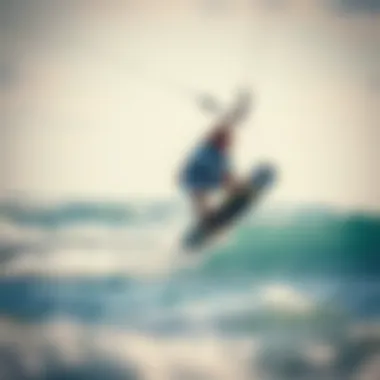
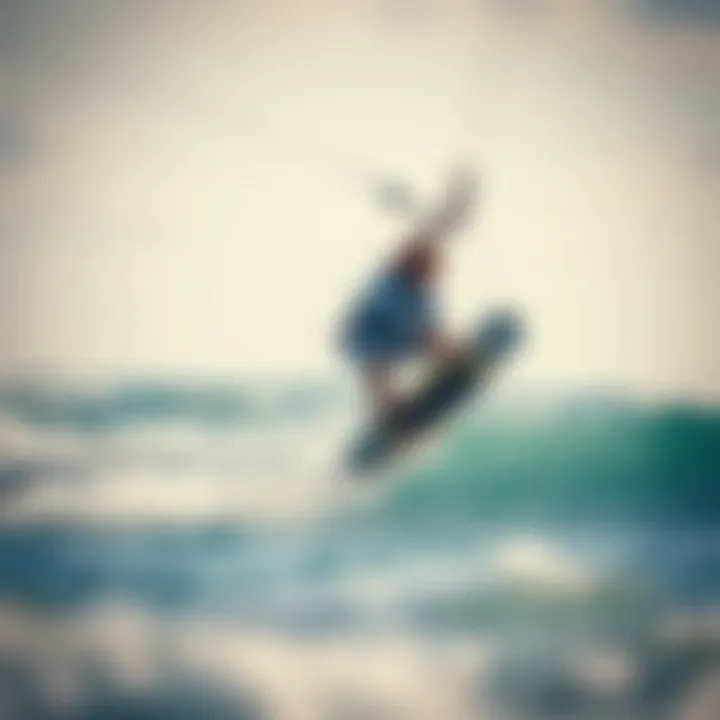
- Finding the Right Speed:
- Experiment with Angle of Attack:
- Entry Speed: Start with a moderate speed when attempting to engage the axis wake. Too slow, and you won’t generate enough lift; too fast, and you may lose control of the kite.
- Acceleration: As you become more comfortable, increase your speed gradually. This will help you discover the optimal velocity that helps you maintain control and maximize the lift.
- Dynamic Changes: Be aware that small adjustments in the kite’s angle can significantly influence your lift and the quality of the wake. A higher angle can boost lift but might increase drag, while a lower angle can decrease lift but allow for greater speed.
- Smooth Transitions: Practice smooth transitions in your angle of attack as you ride. Jarring movements can disrupt the wake and lead to less efficient maneuvering.
"Mastering both your kite positioning and adjustments in speed and angle of attack can unlock new heights in performance."
By understanding and implementing these techniques, kiteboarders can better harness the axis wake, leading to improved performance on the water. With consistent practice and careful observation, these skills can become second nature, resulting in a more dynamic and controlled kiteboarding experience. For a deeper exploration of kiteboarding techniques, resources such as Britannica and Wikipedia offer valuable insights.
Environmental Factors Affecting Axis Wake
Understanding the environmental factors that influence axis wake is critical for kiteboarders aiming to harness this unique phenomenon. The performance of a kiteboarder is not solely dependent on skills or equipment; wind and water conditions play pivotal roles.
When kiteboarding, these factors can significantly shape the ride experience. Recognizing how to adapt to changes in the environment can lead to better performance and safety.
Wind Conditions
Wind is the lifeblood of kiteboarding. Its direction, speed, and consistency all contribute to the formation of the axis wake. If the wind is too gusty, it can lead to unpredictable kite behavior, negatively impacting the rider's control. Conversely, steady winds create a more reliable wake, promoting smoother rides and enhanced trick execution.
- Optimal Wind Direction: Ideally, winds should blow perpendicular to the shore. This orientation allows the kite to generate the best lift, thereby producing a stronger axis wake.
- Wind Speed Variability: Kiteboarders should be aware that wind speeds can fluctuate. Understanding the right kite size to employ in varying wind conditions is crucial. For instance, larger kites suit lighter winds while smaller ones are ideal for howling gales.
- Wind Shear: Variations in wind at different altitudes can lead to shifts in performance. Riders must learn to read the wind to make required adjustments swiftly.
As they ride, kiteboarders need to watch for visual indicators of wind changes, such as ripple patterns on the water's surface. This observation can help anticipate shifts and preemptively adjust the kite's position to maintain a consistent wake pattern.
Water Surface Dynamics
The water’s surface can transform in response to various factors, which in turn affects the axis wake. Differences in surface texture influence how the wake behaves.
- Smooth Waters: A flat or glassy surface allows for cleaner wake formations, yielding higher speeds and more controlled maneuvers. Under these conditions, riders can exploit the full potential of the axis wake.
- Choppy Waters: Waves and swells can disrupt the flow of the wake. In turbulent conditions, kiteboarders may find themselves jostled and thrown off balance, complicating their ability to perform tricks and regain control. Learning to navigate through rough waters requires skill and adaptability.
- Temperature and Salinity Effects: The temperature of the water and its salt content influence buoyancy. Warmer or more saline waters can affect how the water flows, which may alter the dynamics of the wake.
"When conditions change, so must the strategy. A seasoned kiteboarder adapts like water, flowing with the environment rather than against it."
Mastering the interplay of these factors is vital not just for comfort but for safety. Fortunately, with keen observation and practice, kiteboarders can learn to read their environment, ensuring that they can harness the axis wake effectively no matter the conditions.
Safety Considerations When Riding with Axis Wake
When kiteboarding, safety is paramount. Riding with axis wake brings unique challenges and elements that can affect your riding experience and overall safety. A clear understanding of the risks and proper precautions can make all the difference. Alongside the thrill of catching that perfect wave or performing an impressive trick, one must also keep an eye on the surrounding environment and, most importantly, on personal safety.
Avoiding Wake Collisions
Collisions with the wake can lead to serious accidents. The axis wake is created when a kite turns through the air or when a rider carves sharply. Here are some essential tips to avoid wake collisions:
- Keep Your Distance: Always maintain a safe distance from other riders. This helps you avoid unexpected collisions arising from sudden movements.
- Observational Awareness: Stay aware of the position of other kites and riders. A little head swiveling goes a long way in preventing mishaps.
- Communicate: If you’re riding with friends or fellow kiteboarders, use hand signals or verbal cues to communicate your intentions. A nod can sometimes be more useful than shouting in the wind.
- Practice Control: Focus on mastering your control over the kite and yourself. Knowing how your kite responds can help avoid unexpected wake surges that could knock you off balance.
"Safety isn’t just a word; it’s a mindset that every kiteboarder should cultivate."
Keeping these pointers in mind can enhance your riding experience significantly. It is critical to recognize the area around you, not just the wake you're creating but also those of others to prevent any unfortunate incidents.
Gear Safety and Maintenance
The right gear paired with regular maintenance forms the backbone of kiteboarding safety. Here’s what you should be vigilant about:
- Inspection Before Riding: Always inspect your kite and lines for any wear and tear. Look for frays or broken components. A broken line can become a recipe for disaster.
- Secure Your Equipment: Make sure your harness fits snugly and is in good condition. A harness that doesn’t hold can lead to serious injuries.
- Check Leash and Quick Release: Ensure your leash is attached properly and your quick release functions smoothly. In emergencies, you need to be able to release yourself without a fuss.
- Store Properly: After each session, store your gear in a cool, dry place. Saltwater can erode equipment quickly. Rinse everything with fresh water after use.
Regularly reviewing your gear not only enhances safety but can also improve performance. A well-maintained set can respond better and last longer, saving you money in the long run and allowing you to navigate the waters with confidence.
By prioritizing safety and being mindful of the axis wake dynamics and their impact on your riding, you can elevate your kiteboarding experience while keeping risk at bay. With every ride, you’ll become more attuned to the interplay of speed, agility, and safety.
Comparative Analysis: Axis Wake vs. Other Wake Types
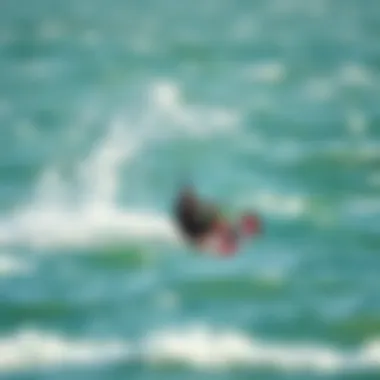
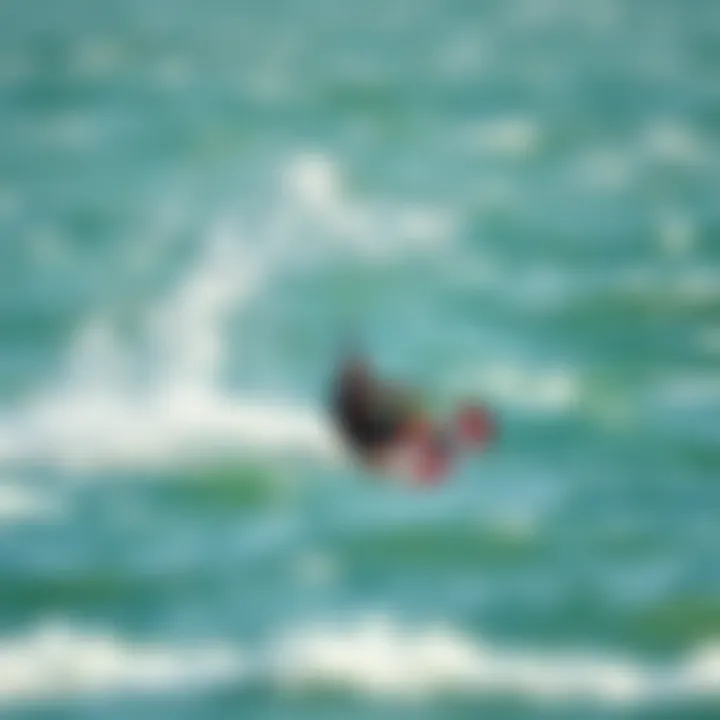
In selecting a kiteboarding technique, understanding the different types of wake is crucial for optimizing performance. The axis wake, with its unique characteristics, distinguishes itself from other wakes, such as the traditional boat wake or the surf wake. By diving into the intricacies of these variations, kiteboarders can enhance their riding experience, adapt their strategies, and ultimately gain a competitive edge.
Differences in Performance Characteristics
The axis wake is unique in how it interacts with the kite, water surface, and rider. While boat wakes are typically created by displacement of water as a vessel moves through it, resulting in a larger and more turbulent wake, the axis wake is formed under different principles.
- Clean Lines: The axis wake offers a clean, defined structure, allowing for more predictable reactions than other wakes. This predictability is vital for advanced maneuvers and technical tricks.
- Speed Maintenance: Riders utilizing the axis wake can maintain speed more efficiently. Unlike other wakes that might cause abrupt changes in momentum, the axis wake helps in sustaining velocity, aiding riders in executing jumps or glides with greater ease.
- Maneuverability: The control over direction and speed during twists and turns is paramount in kiteboarding. The axis wake offers superior maneuverability, making it easier for kiters to respond intuitively to changing conditions.
By catching the qualities of the axis wake, riders are often able to capitalize on speed and agility, especially in competitive settings where seconds can count.
Application in Various Kiteboarding Styles
Kiteboarding encompasses a wide range of styles, each demanding unique approaches to performance and technique. The axis wake can be tailored to fit several of these styles, allowing for versatility among riders. Here are a few examples:
- Freestyle: Freestyle kiteboarding heavily relies on the explosive potential of the axis wake. The clean lift and consistent pull allow riders to master new tricks and challenge their limits without fear of being thrown off balance.
- Wave Riding: In wave riding, the agile response of the axis wake can complement the unpredictable nature of ocean swells. Kiteboarders can more easily navigate changes in wave height and shape, riding with the rhythm of the waves rather than against them.
- Racing: In racing scenarios, speed is the name of the game. Riders can exploit the axis wake to maintain streamlined movement, enhancing acceleration without the drag that often comes with using other types of wakes.
By understanding how to harness the axis wake in different kiteboarding styles, riders can strategically refine their techniques and push towards new horizons.
The Future of Axis Wake Studies
The axis wake phenomenon has caught the attention of both enthusiasts and researchers alike in the realm of kiteboarding. Understanding how this wake behaves not only does enhance performance but could potentially transform the future landscape of kite design and riding techniques. As we delve into this topic, we will touch upon significant advancements in technology and the implications these developments could carry for the competitive scene.
Advances in Kite Design and Technology
Recent years have seen remarkable strides in technology surrounding kiteboarding. From lightweight materials to the incorporation of advanced aerodynamics, the evolution of kite design is directly tied to our understanding of axis wake dynamics. Kite manufacturers are increasingly focusing on how to maximize lift while minimizing drag, all while using designs that cater to various riding styles. This has led to kites that not only fly better but respond to the rider's intentions with impressive precision.
One cannot overlook the integration of smart technology in kites. With onboard sensors that relay real-time data on wind speed, angle, and performance metrics, riders can adjust their strategies on the fly. Such data offers a wealth of information regarding the characteristics of axis wake. By understanding these dynamics, manufacturers can make more informed design choices, ultimately leading to kites that perform optimally under diverse conditions.
These developments have profound implications:
- Performance Tuning: Riders can adjust their gear based on data, tuning their kites for specific water conditions and personal preferences.
- Customized Designs: As manufacturers gather more data, they can create personalized kite configurations that cater to individual riding styles.
- Environmental Adaptation: With advancements in technology, kites can become better equipped to handle varying wind conditions, ensuring safety and control in turbulent environments.
Implications for Competitive Kiteboarding
The future of axis wake studies is particularly pertinent for competitions. As understanding of this dynamic improves, so does the potential for competitors to harness it to gain an edge over each other. Enhanced performance stemming from finely-tuned gear can lead to groundbreaking techniques and tricks that were once thought impossible.
Consider the evolution of competitive techniques. In the not-so-distant past, certain aerial maneuvers required near-perfect wind conditions. Today, advancements in kite design mean that competitors can perform complex tricks with more ease, even in less-than-ideal weather. Here are several key implications worth noting:
- Trick Evolution: As riders get a better grasp of manipulating the axis wake, a new era of trick performance may emerge—one that combines both creativity and physics.
- Increased Safety: With improved gear and support from technology, competitors can push boundaries with greater confidence, decreasing the risk of accidents during challenging maneuvers.
- Data-Driven Strategies: The advent of data analytics in competitions can lead to more strategic approaches. Riders can analyze past competitions and their own performance metrics to refine their techniques further.
With a deeper understanding of the axis wake, kiteboarders can elevate their riding from the ordinary to the extraordinary.
In summary, the future of axis wake studies promises to be exciting and transformative. As kite design continues to mature and adapt with new technology, riders, whether recreational or competitive, stand to benefit from a more tailored approach to performance. In this fast-paced sport, staying abreast of advancements will not only improve individual skills but also reshape the kiteboarding community as a whole.
Finale: Embracing Axis Wake for Enhanced Kiteboarding
In the realm of kiteboarding, understanding and leveraging the axis wake is not just a luxury; it’s an essential skill that can significantly enhance riding performance. By mastering this element, kiteboarders can not only improve their overall speed and maneuverability but also unlock a higher potential for executing tricks and stunts. The application of this knowledge translates directly into better control over the kite and board, allowing riders to adapt to varying wind and water conditions far more effectively.
Recap of Key Insights
Throughout this article, we have examined the essentials of axis wake and its pivotal role in kiteboarding. Here are the key takeaways to consider:
- Definition and Importance: The axis wake, generated by the kite’s movement through the air and water, serves as a dynamic force that can enhance thrust and stability.
- Physics Behind Wake Dynamics: Understanding the physics of wake formation helps in manipulating the wake for performance benefits. This intricacy involves factors like angle of attack and kite positioning, which must be fine-tuned for optimal results.
- Impact on Performance: Optimal use of the axis wake can lead to increased speed and improved agility, as well as a profound impact on the ability to perform advanced tricks, transforming how kiteboarders interact with the water.
- Environmental Considerations: Wind strength and water conditions play a significant role in how effectively the axis wake can be harnessed. Riders must continually adapt to these external variables to maintain their edge.
- Safety Measures: While mastering the axis wake is exhilarating, awareness of safety practices remains paramount to prevent accidents on the water. Avoiding collisions and maintaining gear is crucial for long-term enjoyment and safety during kiteboarding sessions.
Ultimately, the art of kiteboarding hinges on how well an individual can adapt and master the various elements at play, including the axis wake.
Encouragement for Practical Application
With the insights gleaned from this exploration, riders of all levels can begin to apply these principles in their practice. Here are some practical suggestions for turning knowledge into action:
- Experiment with Different Kite Positions: Adjust the kite’s position based on the wind conditions you find yourself in. Learning to read the wind can drastically shift the dynamics of your axis wake, leading to improved performance.
- Regular Practice: Spend time on the water focusing specifically on wake dynamics. Try varying your speed and angles to observe differences in how the wake behaves. Document what works best in various conditions to refine your technique.
- Utilize Community Wisdom: Engage with local kiteboarding communities, whether online or on the beach. Sharing experiences and techniques can open up new perspectives and insights that may enhance your riding.
- Stay Informed on Gear Advances: As kiteboarding technology evolves, keep an eye out for gear that optimally supports axis wake dynamics. This insight will ensure you are riding with tools that align with the latest advancements in the sport.
In closing, embracing the axis wake is not merely about enhancing performance; it’s about enriching the kiteboarding experience itself. As riders invest in their understanding and mastery of this concept, they will undoubtedly find new levels of enjoyment, skill, and safety on the water.
"The only limit to your impact is your imagination and commitment." – Tony Robbins
To further develop your kiteboarding knowledge, consider exploring related resources at Wikipedia, Britannica, and engaging with communities on platforms like Reddit or Facebook. Stay inspired and keep riding!















